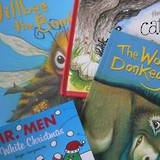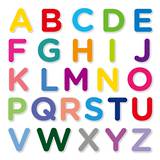Encouraging your preschooler to read & write
|
Why is it that some children enjoy writing and drawing and for others it’s a struggle to get them to even pick up a pencil? Children are unique and each has individual ways in which they learn. There are many different learning styles and many children lean towards one, while also being a combination of others.
|
You might also be interested in ...
8 Ways to make story time fun
Toddlers and preschoolers have an attention span of around 10 - 12 minutes, and once it’s exhausted, learning and listening are no longer fun for them. So when it comes to story time mix it up a bit. Use one or two of these ideas for each book you read and make story time as fun and as interactive as possible.
Teaching preschoolers the alphabet & letters
Being able to read is a vital life skill, so make the early stages of learning the alphabet as fun as possible for your preschooler. Preschoolers learn and develop best through using their whole body, all of their senses and their natural environments. You’ll find that most preschoolers begin to recognise letters when they’re about 2 to 3 years old, and are able to identify a large number of letters between 4 and 5 years old.







Children are unique and each has individual ways in which they learn.
There are many different learning styles and many children lean towards one, while also being a combination of others.
What are the different ways a child learns?
These different learning styles can be why some children don’t appear to be interested in learning to write their name or learn their ‘ABC’, but the real issue is that it is not being taught in a way that suits their learning style.
Are you worried about your child’s lack of interest in reading/writing?
Many parents and caregivers worry if their four year old shows no interest in trying to write their name or is not very interested in books.
This concerns parents and caregivers, as they want their child to have a positive and successful start to school.
How then do these children learn valuable literacy skills that will give them a strong foundation for success with reading and writing?
It may be that the child’s learning style doesn’t fit with some of the traditional methods for developing literacy skills which mostly appeal to visual, verbal and logical learning.
For example a child whose learning style is kinaesthetic will need a more creative approach to learning.
Suggested ideas to build literacy
Look for activities that are based around your child’s interests and current areas of play.
You will be surprised at how easy it is to bring literacy skills into all kinds of play and to incorporate different learning styles. Ideas include:
Like the article you've just been reading? Click on the Refer A Friend link at the top of the page and send the details to friends who might like to read it too.Tell your friends
More Hot Topics for you to enjoy
Source: This article has been written by Creators, a nationwide service offering quality home-based care and education. Creators are passionate about seeing every child’s unique talent being recognized and nurtured.